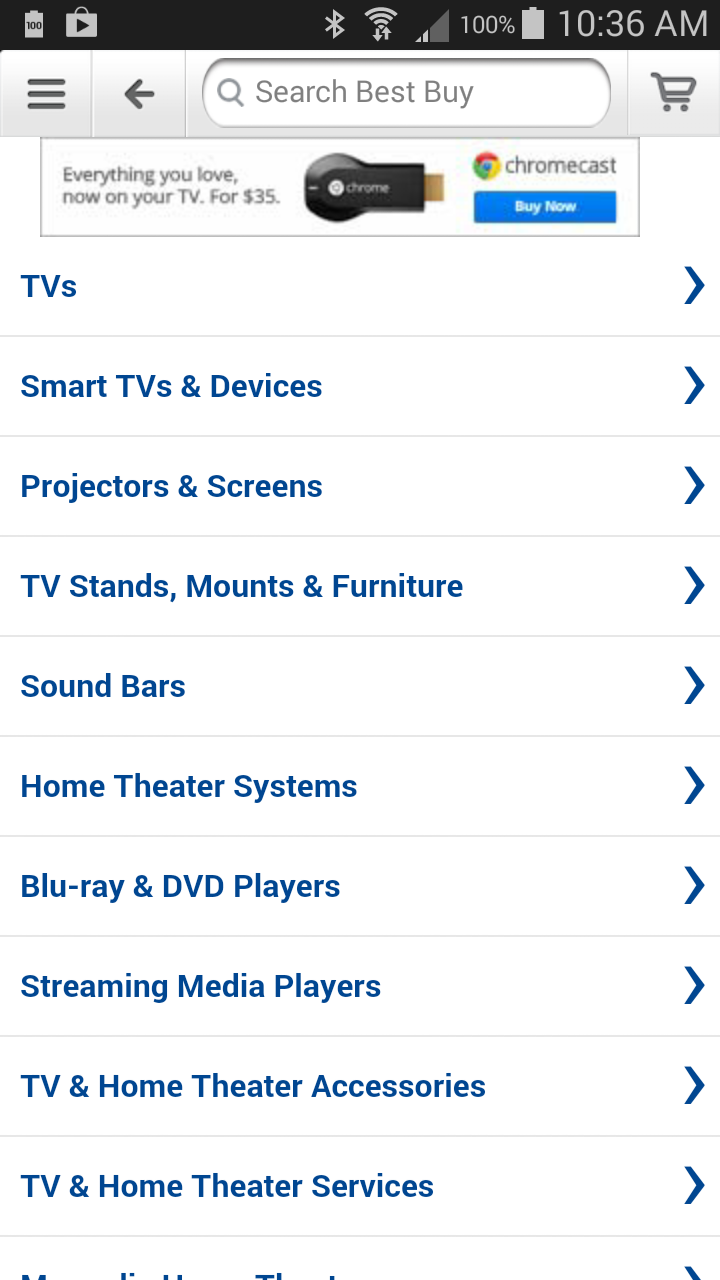The goal should probably be to "understand mobile".
You see two screen shots from the Best Buy app in this post. Neither screen shot elicits a romantic shopping experience, and how the heck could they possibly elicit a romantic shopping experience? There's not enough real estate to present anything but boring text, and a handful of items after clicking on a boring link.
Plenty of room, of course, to advertise Google Chromecast, of course, but that's a whole 'nuther story.
The dynamics of the mobile user are different.
- Younger. Don't listen to the pundits who tell you that 77 year olds are playing Candy Crush and then are buying items via an Amazon App. Nonsense. These are largely customers under the age of 40. Yes, there will be the rogue 56 year old, fine. But look at the demographics as a cohort, and you'll see truth emerge. That truth, of course, is very important.
- Need: On your laptop, you can "browse". On your phone, you have a need, often previously identified. This is a different shopping experience, and should be treated as such.
Here's the problem with mobile, based on my project work. The "need" that mobile serves causes a problem. When the customer needs something, the customer may well buy something. But the cross-shopping opportunities are reduced. Often, this results in a lower average order value, caused by fewer items per order. This creates a weaker future customer (customers buying more items per order are typically worth more in the future). This also reduces the size of the mobile merchandise assortment, giving fewer items a chance to achieve winning status.
Pay close attention to these dynamics. Often, mobile is viewed as a positive channel for future sales potential. Just as often, mobile shrinks the assortment, hurting demand generation.



No comments:
Post a Comment
Note: Only a member of this blog may post a comment.